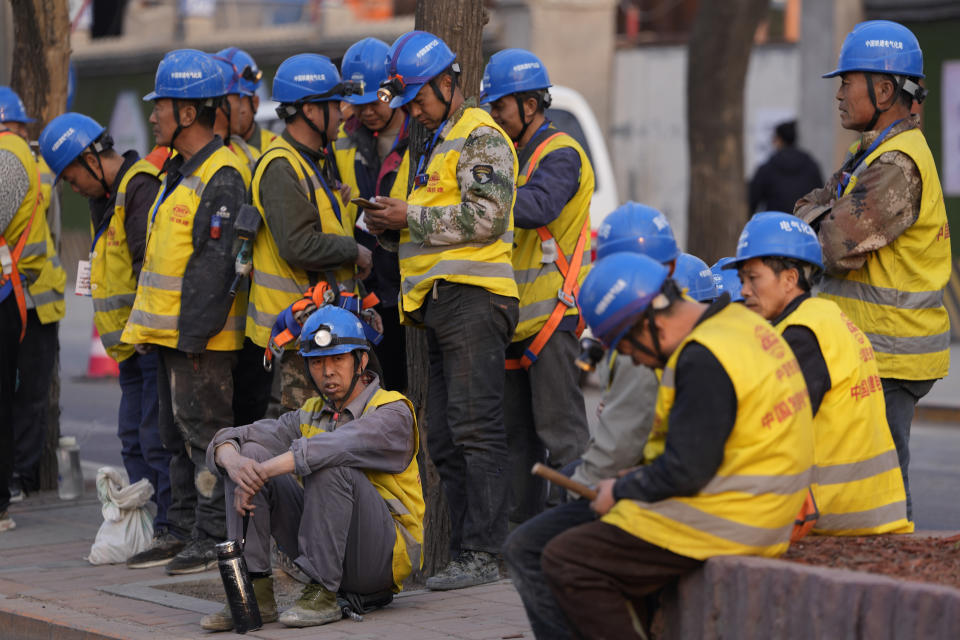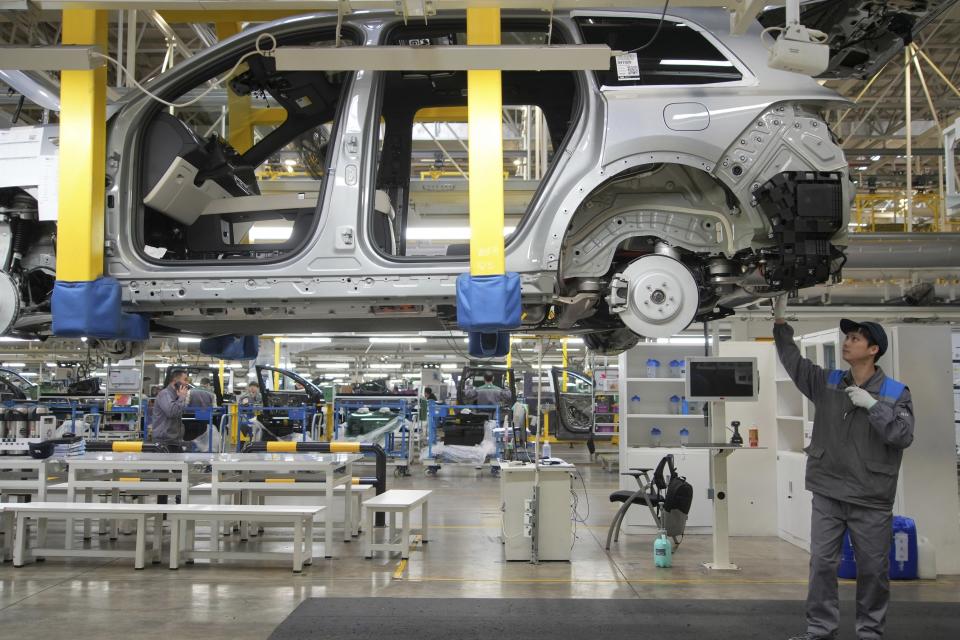China's economy grew 5.3% in first quarter, beating expectations, though weak spots remain
HONG KONG (AP) — China’s economy grew faster than expected in the first quarter of the year with help from policies and stronger demand, though signs of weakness in the troubled housing market persisted.
The world’s second-largest economy expanded at a 5.3% annual pace in January-March, beating analysts’ forecasts of about 4.8%, data released Tuesday showed. Compared to the previous quarter, the economy grew 1.6%.
China’s economy has struggled to bounce back from the COVID-19 pandemic but gained momentum late last year as government policies to help the housing market and boost investment took effect.
However, Tuesday's better-than-expected data came days after China reported its exports sank 7.5% in March compared to the year before, while imports also weakened. Inflation cooled, reflecting deflationary pressures resulting from slack demand amid a crisis in the property sector.
Investment in property developments fell 9.5% from a year earlier in January-March, compared with a decline of 9% in the previous quarter.
“The investment and sales of real estate in the first quarter are indeed not very optimistic. The real estate market is still in a process of adjustment,” Sheng Laiyun, deputy commissioner of the National Bureau of Statistics, told reporters in Beijing.
Sheng also acknowledged that while growth was stronger than anticipated, it was uneven. Investment in infrastructure such as roads and bridges rose 6.5% year-on-year after a 6% increase in the previous quarter.
Fixed investment, in factories and equipment, grew 4.5% compared to the same period a year earlier, up from 4.2% in the previous quarter.
China's leaders have been trying to recalibrate growth away from investment spending and toward a greater reliance on consumer demand, similar to other major economies.
While retail sales climbed 4.7% in January-March, growth in March was only 3.1% year-on-year.
“Looking at the degree of recovery, we have found that the recovery of consumption is not as good as production, and the recovery of small and medium-sized enterprises is not as good as that of large enterprises, so there is a clear imbalance in the economic recovery," Sheng said.
Industrial output for the first quarter was up 6.1% compared to the same time last year, but it rose only 4.5% in March.
The strong growth in January-March was supported by “broad manufacturing outperformance,” festivities-boosted household spending due to the Lunar New Year holidays and policies that helped boost investments, according to China economist Louise Loo of Oxford Economics.
“However, ‘standalone’ March activity indicators suggest weakness coming through post-Lunar New Year,” she said. “External demand conditions also remain unpredictable, as seen in March’s sharp export underperformance.”
Loo noted that an unwinding of excess inventory, normalization of household spending after the holidays and a cautious approach to government spending and other stimulus will affect growth in this quarter.
Policymakers have unveiled a raft of fiscal and monetary policy measures as Beijing seeks to boost the economy. China has set an ambitious gross domestic product (GDP) growth target of about 5% for 2024.
Such strong growth usually would push share prices across the region higher. But on Tuesday, Asian shares fell sharply after stocks retreated on Wall Street.
The Shanghai Composite index lost 1.47% and the Hang Seng in Hong Kong lost 2.1%. The benchmark for the smaller market in Shenzhen, in southern China, lost 3.8%.
Stronger growth in the region's biggest economy normally would be seen as a positive for its neighbors, which increasingly rely on demand from China to power their own economies. However, strong growth figures are also viewed as a signal that the government will hold back on further stimulus.


